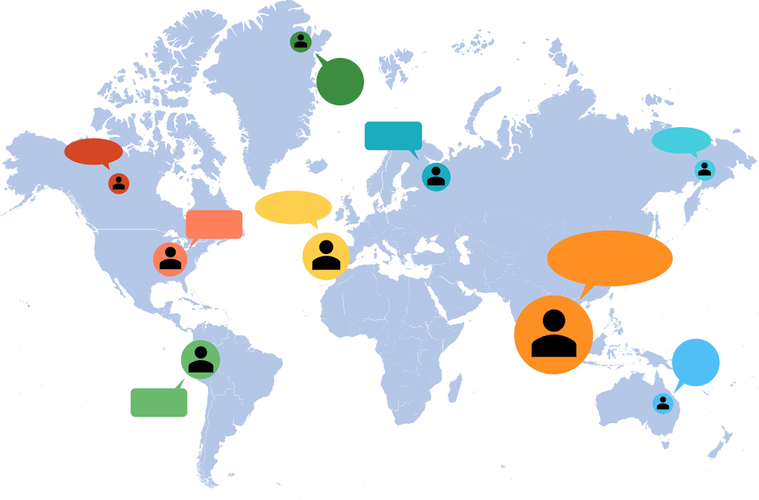Backstage & Influences
Containers do this by enabling developers to isolate code into a single container. This means they are much more efficient than hypervisors in system resource terms. Instead of virtualizing hardware, containers rest on top of a single Linux instance.
It eventually allows you to run multiple containers simultaneously on the same host. Moreover, as each container is only allowed to access the assigned resources – it helps in reducing the risk of several potential issues such https://www.globalcloudteam.com/tech/docker/ as downtime, etc. Also, you can easily remove any app by deleting its container, and it will not leave behind any temporary files, etc. on your system. Docker is a fantastic tool that aids in the continuous deployment process.
When And Why To Use Docker
Podman Desktop also provides an out-of-the-box Kubernetes environment based on Kind. Docker allows you to easily build applications using containers, running multiple applications on the same hardware, for easier management and deployment of applications. On theFlatlogic platform, after generating the application, we provide the user with two ways to run the application locally, one of which is using Docker. Developers can use Docker Compose to manage multi-container applications, where all containers run on the same Docker host. Docker Compose creates a YAML (.YML) file that specifies which services are included in the application and can deploy and run containers with a single command. Because YAML syntax is language-agnostic, YAML files can be used in programs written in Java, Python, Ruby and many others languages.
This allows developers to roll back to a previous version if the need arises. Docker Hub is the largest cloud-based repository of container images provided by Docker. It supplies over 100,000 images available for use created by open-source projects, software vendors, and the Docker community.
Why Do So Many People Use Docker?
It’s also possible to save on costs of software licenses, because you need many fewer operating system instances to run the same workloads. All of the containerized apps share a single, common operating system , but they are compartmentalized from one another and from the system at large. The operating system provides the needed isolation mechanisms to make this compartmentalization happen. Docker wraps those mechanisms in a convenient set of interfaces and metaphors for the developer. Learn how lightweight, portable, self-contained Docker containers improve software development, application deployment, and business agility.

You can view the exact specifications of different containers using their Dockerfiles. This way, when working in teams, you can guarantee that all software images that are built using the same Dockerfile will function the same way. At its core, Docker is simply a containerization platform that’s available open-source. For those who don’t know, containerization simply refers to packaging software code using simply the libraries of the operating system and the dependencies needed to run the code. Once you run a Docker image to create a container, a new read-write layer is added. The additional layer allows you to make changes to the base image, which you can commit to create a new Docker image for future use.
A Little Bit of Container History
While it often works, this is fraught with side effects and not the intended use case for dind. It was added to ease the development of Docker itself, not provide end user support for nested Docker installations. By clicking “Post Your Answer”, you agree to our terms of service and acknowledge that you have read and understand our privacy policy and code of conduct.

For instance, you can use separate containers for front-end development or for servers. This makes it easy for dev teams to run multiple projects on the same server, without having to worry about any conflicting dependencies. Docker has the ability to track discrete versions of container images. This gives you unprecedented version control, letting you roll back to a previous iteration, view past-built versions, including developers who worked on them, and how the work was done. Docker Compose is used to launch, execute, communicate, and close containers with a command.
Why Docker containers are great
It lets you test your applications in a managed Kubernetes environment without having to set up and manage your own infrastructure. It also provides a consistent environment for testing and deployment, which can help reduce the risk of configuration errors and compatibility issues. Container work on an image-based deployment model that simplifies using https://www.globalcloudteam.com/ the application across multiple environments. Images are a fundamental element of the Docker environment because they allow collaboration between developers in a manner that has not been possible before. GitHub is a repository hosting service, well known for application development tools and as a platform that fosters collaboration and communication.
- Then the user can build and start all of the services from their setup with a single command.
- The Docker daemon listens for Docker API requests and manages Docker objects such as images, containers, networks, and volumes.
- One persistent myth of containers is that they make VMs obsolete.
- Docker has regularly added security enhancements to the Docker platform, such as image scanning, secure node introduction, cryptographic node identity, cluster segmentation and secure secret distribution.
- From contributing to open source projects and to being elected to the CNCF Technical Oversight Committee, the people building Docker tech are one of the things that sets us apart from the rest.
Since images are saved by their names, we differentiate images by their tags. AuFS pose some problems when dealing with DnD , but this is a subject for other article! The chroot call allowed the kernel to change the apparent root directory of a process and its children. I’ll be using this amazing article by Rani Osnat that explains the whole history of containers in more depth.
Docker components and tools
Containers’ portability and performance advantages can aid in making your development process more fluid and responsive. Instances of containerized apps use far less memory than virtual machines, they start up and stop more quickly, and they can be packed far more densely on their host hardware. Docker provides the ability to package and run an application in a loosely isolated environment called a container. The isolation and security allows you to run many containers simultaneously on a given host. Containers are lightweight and contain everything needed to run the application, so you do not need to rely on what is currently installed on the host.

More and more companies are switching to Docker due to its reliability, performance, and functionality. Accelerate application delivery by standardizing environments and removing conflicts between language stacks and versions. A managed immutable VM for running containers that makes recovering from issues typically as easy as a restart. It’s now more common to use an orchestration platform such as Kubernetes or Docker Swarm mode.
When To Use Docker
Docker container technology debuted in 2013; Docker Inc. was formed to support a commercial edition of container management software and be the principal sponsor of an open source version. Mirantis acquired the Docker Enterprise business in November 2019. Using Kind with Podman Desktop allows developers to ensure their local development environment closely mirrors their production environment.
Next Post : The reason We Nevertheless Have To Talk About Interracial Dating
-
Search